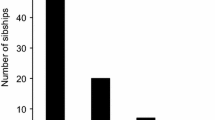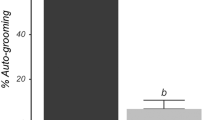Summary:
Drifting of honeybees depends on the arrangement, the colouring of the hives and on various environmental factors. Bees are able to distinguish between related and non-related individuals, so one aim of this study was to determine whether drifting also depends on relatedness. In addition we wanted to examine whether there are differences in survival of drifted bees and non-drifted bees and to model the component of alien worker bees in a colony's population.¶We used two non-related strains of bees. The colonies stood in rows. Each of the colonies had two non-related neighbour colonies, except for the colonies on the ends of the rows. From each colony, 200 newly emerged bees were marked individually and 100 of them were reintroduced into their original colony (native bees) and 100 into a non-related neighbouring colony (foreign bees). The marked bees were examined for presence on their 2nd, 6th, 9th, 16th, 25th and 34th day of life. Experiments were done in summer and fall. ¶There was no difference in survival and the amount of drifting of native and foreign bees. We also found no differences in the number of drifting bees for the two non-related strains. The bees never preferred related colonies when drifting. Bees of strain 1 did not show any preferences. In two experiments significantly more bees of strain 2 drifted into colonies of strain 1. Most bees drifted into the neighbouring colony next to the colony they left. In summer significantly more bees that had drifted until their 9th day of life, survived until the 25th day than bees that did not drift until that day. In fall we did not find this difference. This was true for bees of both strains. ¶Our data support the results of Jay (1965), who found that more bees drift from a centre colony to the end colonies of a row than vice versa. ¶With a model we calculated the component of alien worker bees living in a colony's population. On average, 22 ± 3% alien worker bees were calculated for edge and 42 ± 6% for inner hives in a row in our first experiment (summer). In a second experiment (fall) the components were 13 ± 1% for the edge colonies and 39 ± 4% for the inner colonies in the row. Drifting seems not to be influenced by relatedness and did not shorten the lifetime of the bees. This indicates a great tolerance against drifted bees and a high intermix of an apiary's population when no precautions to reduce drifting are taken.
Similar content being viewed by others
Author information
Authors and Affiliations
Additional information
Received 6 August 1997; revised 24 November 1997; accepted 1 December 1997.
Rights and permissions
About this article
Cite this article
Pfeiffer, K., Crailsheim, K. Drifting of honeybees. Insectes soc. 45, 151–167 (1998). https://doi.org/10.1007/s000400050076
Issue Date:
DOI: https://doi.org/10.1007/s000400050076




